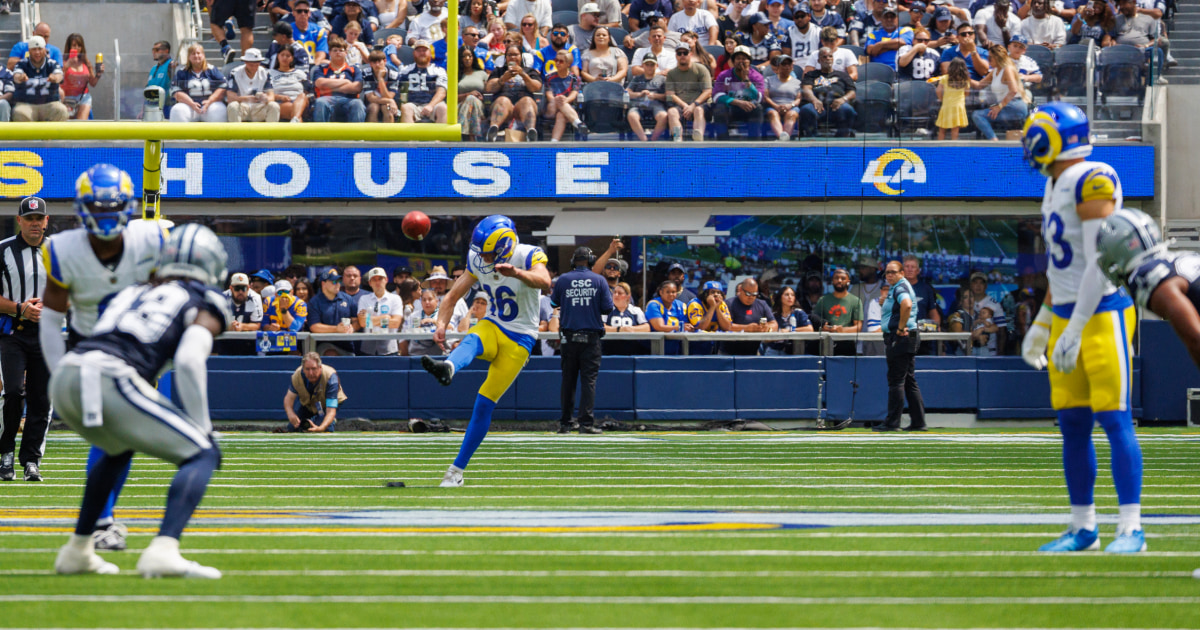We had become accustomed to this: A thrilling kickoff flies toward the receiving team but ends in a touchback, restarting the game at the 25-yard line and stopping the action.
But the new NFL season, which begins tonight with the Baltimore Ravens and Kansas City Chiefs, promises fewer touchbacks and more returns as the league adopts its new “dynamic kickoff rules” approved by NFL owners earlier this year.
Here’s what you should know:
Why the change?
The kick-off rules have been adjusted several times to reflect the high risk of injury from high-speed collisions during play, as the players of the kicking team would have a sprinting head start before the returning team could catch the ball.
In 2011, the league moved kickoffs five yards forward, to the 35-yard line. This made it easier to kick the ball deep into the end zone and resulted in more touchbacks, as teams started at the 20-yard line. In 2016, touchbacks placed teams at the 25-yard line, which encouraged them even more. Last season, returners could then call a fair catch for a touchback anywhere, not just in the end zone, resulting in the lowest return rate in NFL history.
A dilemma arose: injuries were decreasing, but kickoffs were becoming less exciting, so the league decided to conduct a one-year test with a radically different system, closer to the XFL style.
What are the new rules?
Standard kicks still start at 35, but the rest of the lineup looks quite different. There is an area called the “landing zone” between the receiving team’s end zone and the 20-yard line. You may have seen this zone highlighted by a rectangle in preseason broadcasts.
This is what the kickoff setup looks like now:
- The 10 players of the kicking team line up at the receiving team’s 40-yard line and are not allowed to move until the ball touches a player or the ground in the landing zone or end zone.
- The returning team may have a maximum of two players anywhere in the landing zone, while at least nine players line up between their 30- and 35-yard lines (or “setup zone”) and at least seven players touch the 35. Only the kickers and two players may move until the ball touches a player or the ground in the landing zone or end zone.
By moving teams closer together at the start and limiting their movement, players have less space and speed for violent collisions that have been a problem in the league in the past.
Here are the most important changes to touchbacks and returns:
- If the ball reaches the end zone in the air, the receiving team can return it or opt for a touchback and possession at the 30-yard line.
- If the ball hits the landing zone and then goes into the end zone, the receiving team can return it or opt for a touchback and possession at the 20.
- Any kick that hits the landing zone (but does not go into the end zone) must be returned.
- Every time the ball is kicked out of bounds or in front of the landing zone, it reaches the 40-meter line.
This could encourage teams to kick the ball just short of the end zone to force a return and create more room for an exciting play. But kickers could still kick the ball deep to get it to the 30-yard line, although this gives the receiving team better starting position than in previous seasons.
What do people think so far?
The new rules have sparked debate among players and fans about whether they effectively encourage returns. Former Patriots coach Bill Belichick is skeptical because he believes a possession at the 30-yard line is still not worth the risk of a long return.
After the Hall of Fame Game last month, Chicago Bears coach Matt Eberflus said teams would have to try different things over the course of the preseason and regular season and adapt to the new rules.
Kansas City Chiefs star tight end Travis Kelce admitted to his brother Jason on their New Heights podcast that he was initially “so against” the new rules, but changed his mind after seeing the impact they had.
“I’m so excited about it. I think it’s fun,” Kelce said. “It’s still electrifying. The guy with the ball is still hitting as hard as he can.”
Meanwhile, fans on social media expressed mixed reactions to the rules, with some calling them “a joke” while others expressed their excitement about the new look.
So far, there have actually been more returns in the preseason. According to the NFL, 70.5% of kickoffs have been returned in 49 preseason games, compared to 54.8% in last year’s preseason. However, the average returner reached the 28-yard line, just two yards short of a 30-yard touchback, and teams may yet change their minds about the new format.
In addition to the kickoff rules, new regulations this season limit onside kicks to the fourth quarter and require teams to announce them in advance. The league also implemented a ban on hip-drop tackles, which has drawn criticism from numerous players on social media.
It may be too early to tell what impact the new NFL rules will have, but all eyes will be on the fans as the country returns to cheering on their favorite sport.

